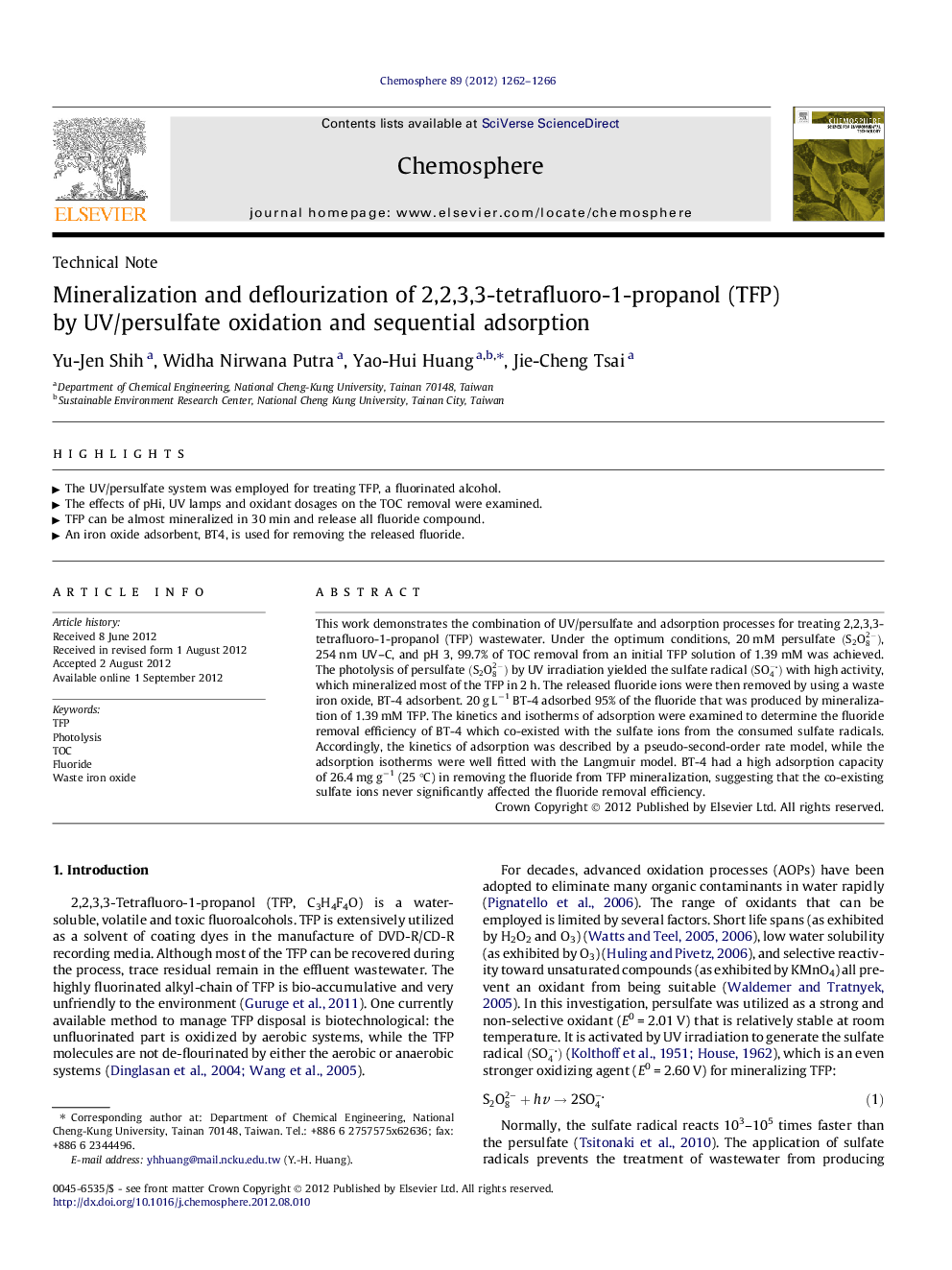| Article ID | Journal | Published Year | Pages | File Type |
|---|---|---|---|---|
| 4409896 | Chemosphere | 2012 | 5 Pages |
This work demonstrates the combination of UV/persulfate and adsorption processes for treating 2,2,3,3-tetrafluoro-1-propanol (TFP) wastewater. Under the optimum conditions, 20 mM persulfate (S2O82-), 254 nm UV–C, and pH 3, 99.7% of TOC removal from an initial TFP solution of 1.39 mM was achieved. The photolysis of persulfate (S2O82-) by UV irradiation yielded the sulfate radical (SO4-) with high activity, which mineralized most of the TFP in 2 h. The released fluoride ions were then removed by using a waste iron oxide, BT-4 adsorbent. 20 g L−1 BT-4 adsorbed 95% of the fluoride that was produced by mineralization of 1.39 mM TFP. The kinetics and isotherms of adsorption were examined to determine the fluoride removal efficiency of BT-4 which co-existed with the sulfate ions from the consumed sulfate radicals. Accordingly, the kinetics of adsorption was described by a pseudo-second-order rate model, while the adsorption isotherms were well fitted with the Langmuir model. BT-4 had a high adsorption capacity of 26.4 mg g−1 (25 °C) in removing the fluoride from TFP mineralization, suggesting that the co-existing sulfate ions never significantly affected the fluoride removal efficiency.
► The UV/persulfate system was employed for treating TFP, a fluorinated alcohol. ► The effects of pHi, UV lamps and oxidant dosages on the TOC removal were examined. ► TFP can be almost mineralized in 30 min and release all fluoride compound. ► An iron oxide adsorbent, BT4, is used for removing the released fluoride.
